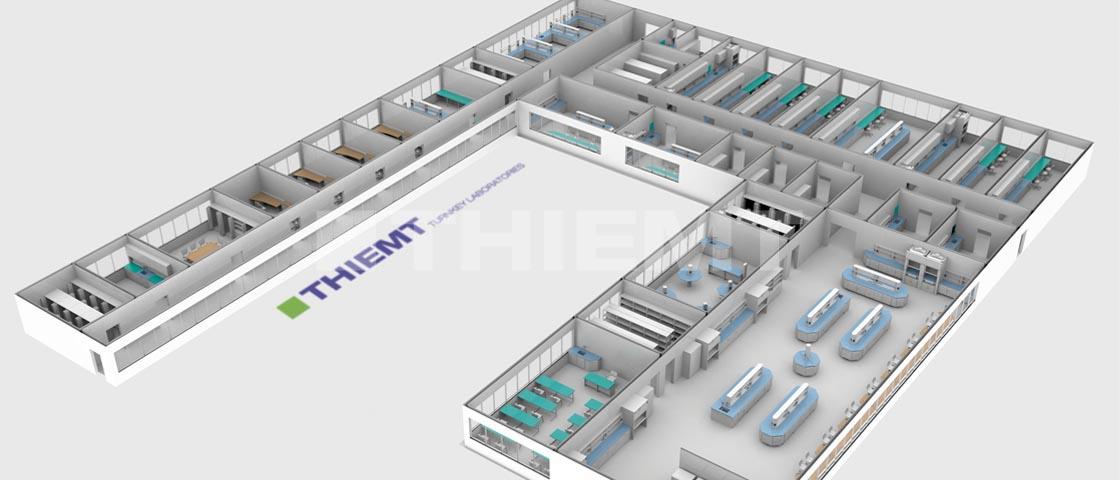Detailed planning of laboratory buildings
Laboratory buildings – an overview of the detailed planning
The detailed planning comprises the following work phases:
- Licence planning (WP4)
- Implementation planning (WP5)
- Preparation of the placing (WP6)
- Assistance during the placing (WP7)
With the detailed planning and its four work phases, the project will be planned so detailed, it can be realized on the basis of these plans.
The work phases 5 and 6 – that is the preparation of the placing and the assistance during the placing – is also summarized as the call for tenders.
THIEMT attends you throughout these work phases.
The licence planning
In the licence planning the documents and technical preparations of the outline planning will be combined and modified to an application for construction permit. Purpose of the submission of the licence planning is the building permit for the laboratory building.
The implementation planning
In the implementation planning all documents will be merged and refined, so they can be used for the implementation.
Drawings of the implementation planning are scaled 1:50. Detailed drawings are be issued in a scale ranging from 1:1 to 1:20.
The implementation planning of a laboratory building now also includes all sectoral plannings of the single lots laboratory and TBE (air conditioning, aeration, water), electrics, fire protection and others.
The preparation of the placing
In the preparation of the placing, the contract specification for each single lot of the laboratory building will be issued. The contract specifications are the centrepiece for the call for tenders and the placing of a building project. It is essential that the contract specifications describe each single lot for the implementation of the laboratory building exactly and consistently.
The assistance during the placing
After the dispatch of the contract specifications, the then resulting offers will be evaluated and a price comparison list will be issued.
The outcome of this evaluation will be a recommendation for the placing of the single service types.
With the issue of the call for tenders the last cost finding takes place. This is called the cost estimate and at this point has an accuracy of ±10%.
